
Find Help
More Items From Ergsy search
-

Can Botox be used for treating conditions other than wrinkles?
Relevance: 100%
-
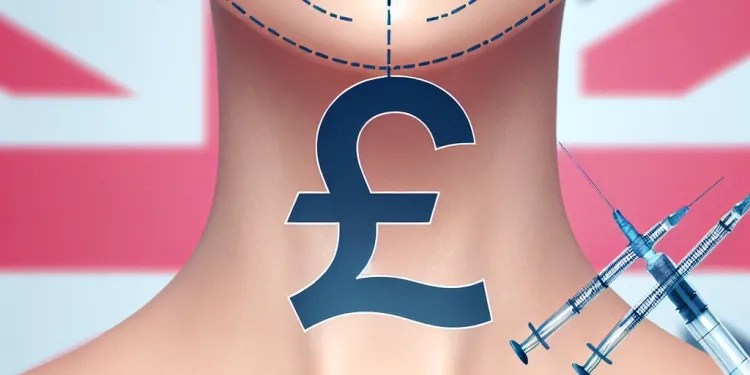
What areas can be treated with Botox?
Relevance: 80%
-

What is Botox used for?
Relevance: 69%
-

How does Botox work?
Relevance: 69%
-
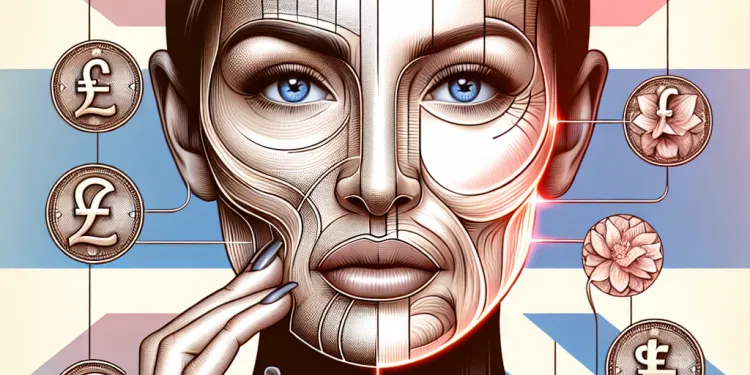
Will a facelift remove all my wrinkles?
Relevance: 68%
-
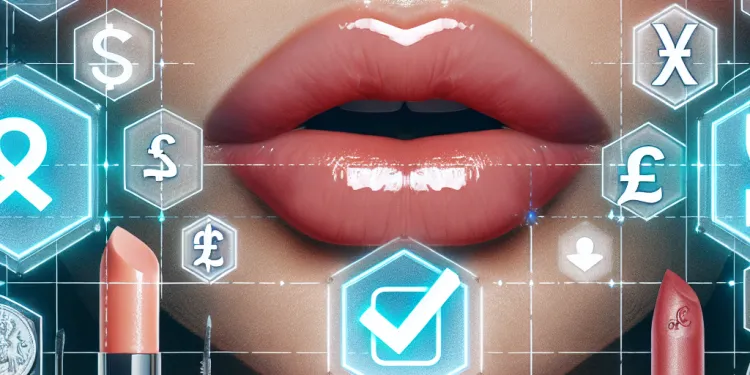
Is Botox safe?
Relevance: 65%
-

What are the common uses of Botox?
Relevance: 64%
-

What is Botox?
Relevance: 62%
-

What is Botox made from?
Relevance: 61%
-

How does Botox work if it's related to botulism toxin?
Relevance: 60%
-
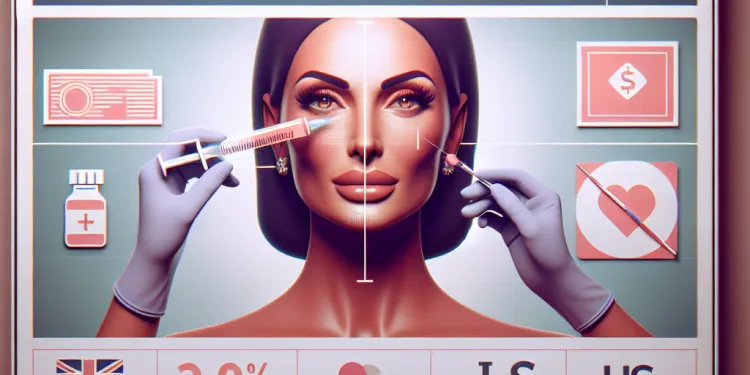
Does Botox hurt?
Relevance: 57%
-

Can Botox help with excessive sweating?
Relevance: 56%
-

How often should I get Botox treatments?
Relevance: 55%
-

Can I get Botulism from Botox Treatments?
Relevance: 55%
-

Is Botox safe?
Relevance: 53%
-

Can anyone get Botox treatments?
Relevance: 53%
-

How long does Botox last?
Relevance: 53%
-

Is Botox treatment expensive?
Relevance: 52%
-

How long has Botox been used in medicine?
Relevance: 52%
-

How soon will I see results from Botox?
Relevance: 52%
-

Can Botox be used for migraines?
Relevance: 51%
-

How long do the effects of Botox last?
Relevance: 51%
-

What are the side effects of Botox?
Relevance: 50%
-

Can I get Botox while pregnant?
Relevance: 50%
-
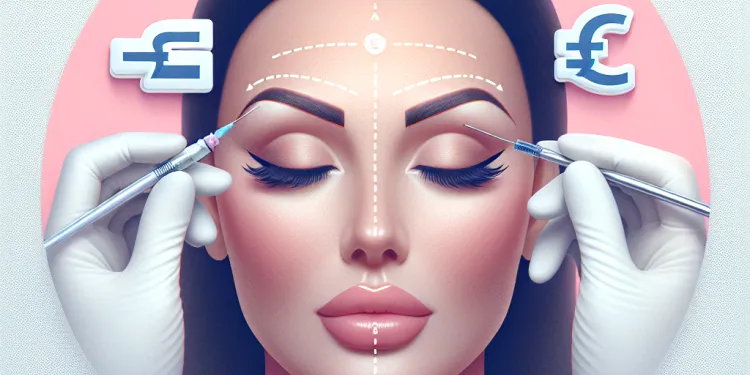
Can Botox lift my eyebrows?
Relevance: 49%
-

What are the side effects of Botox?
Relevance: 49%
-

Does Botox injection hurt?
Relevance: 48%
-
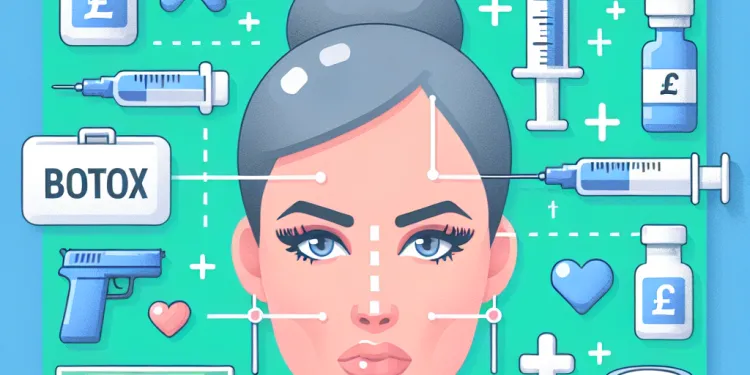
Is Botox vegan?
Relevance: 48%
-

Can Botox cause serious health issues?
Relevance: 48%
-

How much does Botox cost?
Relevance: 46%
-

Who can administer Botox?
Relevance: 45%
-

Are there any long-term effects of using Botox?
Relevance: 45%
-

How should I prepare for a Botox appointment?
Relevance: 43%
-

What conditions is Omeprazole used to treat?
Relevance: 41%
-

What conditions is ketamine used to treat?
Relevance: 41%
-

Can homeopathy treat all medical conditions?
Relevance: 39%
-
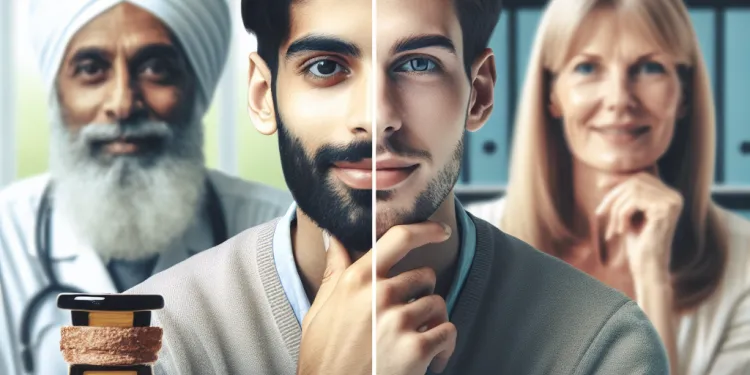
What are some common conditions treated with homeopathy?
Relevance: 39%
-

What condition does Wegovy treat?
Relevance: 38%
-

What should I do if I experience side effects after a Botox injection?
Relevance: 37%
-

What precautions should I take before getting Botox?
Relevance: 36%
Can Botox Be Used for Treating Conditions Other Than Wrinkles?
Botox, a popular treatment in the cosmetic industry, is widely known for its ability to reduce the appearance of wrinkles. However, its uses extend far beyond these cosmetic applications. In the UK, as in other parts of the world, Botox has gained recognition as a versatile treatment for a variety of medical conditions.
Medical Conditions Treated with Botox
One of the most common non-cosmetic uses of Botox is in the treatment of chronic migraines. Botox has been approved for this purpose in the UK and can help reduce the frequency and severity of migraine headaches in certain patients. By relaxing the muscles around the head and neck, Botox decreases the likelihood of migraine onset.
Another significant medical application of Botox is in the treatment of hyperhidrosis, or excessive sweating. Patients suffering from this condition can receive Botox injections in areas such as the armpits, hands, feet, or face. Botox works by blocking the nerves responsible for activating sweat glands, thereby significantly reducing excessive sweating.
Botox is also used for managing certain muscle-related conditions. For instance, it is a common treatment for spasticity, a condition characterised by muscle stiffness and rigidness. This condition often affects individuals with cerebral palsy, multiple sclerosis, or after a stroke. By relaxing the overactive muscles, Botox helps improve mobility and reduce discomfort.
Neurological and Urological Uses
In the realm of neurology, Botox has shown effectiveness in treating cervical dystonia, a painful condition where neck muscles contract involuntarily. This can lead to abnormal head postures and neck pain. Botox injections can provide substantial relief for many patients by reducing muscle contractions.
Further, Botox is utilised in urology for the treatment of overactive bladder and incontinence. Patients who do not respond well to oral medications may find relief with Botox injections into the bladder muscle, which helps reduce urinary urgency and frequency.
Safety and Considerations
As with any medical treatment, it is essential to consider the potential side effects and consult with a healthcare professional. Botox is generally considered safe when administered by a qualified professional. However, patients may experience mild side effects such as temporary muscle weakness or bruising at the injection site.
In conclusion, Botox is a versatile medical treatment offering relief for various non-cosmetic conditions. Its successful application in these areas continues to expand its role beyond the realm of aesthetics, providing benefits to many individuals across the UK.
Can Botox Be Used for Treating Things Other Than Wrinkles?
Botox is often used to make wrinkles look smaller. But Botox can also help with other health problems. In the UK and other places, doctors use Botox to treat a lot of different medical issues.
Health Problems Treated with Botox
Doctors use Botox to help people who have migraines. Migraines are bad headaches that happen a lot. In the UK, Botox can help make these headaches happen less often and hurt less. Botox works by relaxing muscles in the head and neck.
Botox is also used to help with too much sweating, called hyperhidrosis. People who sweat a lot can get Botox in places like their armpits, hands, feet, or face. Botox stops the nerves that make sweat, so people sweat less.
Botox can help with muscle problems too. It helps people with spasticity, which is when muscles are stiff. This happens with conditions like cerebral palsy, multiple sclerosis, or after a stroke. Botox helps muscles relax, making it easier to move.
Other Uses for Botox
Botox can help with neck problems, like cervical dystonia. This is when neck muscles move on their own, causing pain. Botox makes the muscles relax, which helps with pain and movement.
In bladder problems, Botox helps people who need to pee too often. If pee medicines do not work, Botox can be put in the bladder to help. It makes people feel like they need to pee less often.
Is Botox Safe?
Botox is safe when a professional gives it. But, sometimes people might have small side effects. Their muscles might feel weak for a short time, or there could be a bruise where the Botox was injected.
In summary, Botox is not just for wrinkles. It helps with many medical problems and makes life better for many people in the UK.
Frequently Asked Questions
Can Botox be used to treat chronic migraines?
Yes, Botox is approved by the FDA for the treatment of chronic migraines in adults. It can help reduce the frequency and severity of headache days.
Is Botox effective for excessive sweating (hyperhidrosis)?
Yes, Botox can be used to treat severe underarm sweating (hyperhidrosis) by blocking the nerves responsible for activating sweat glands.
Can Botox help with muscular disorders?
Yes, Botox is used to treat certain muscular disorders such as cervical dystonia, a condition that causes severe neck and shoulder muscle contractions.
Does Botox assist in the treatment of overactive bladder?
Yes, Botox can be injected into the bladder muscle to help reduce urinary incontinence and urgency in people with an overactive bladder.
Can Botox be used for TMJ disorder?
Yes, some people use Botox off-label to relieve pain and tension associated with temporomandibular joint (TMJ) disorders.
Is Botox used to treat strabismus?
Yes, Botox was initially developed to treat strabismus, a condition characterized by misalignment of the eyes.
Can Botox help with depression?
Studies have suggested that Botox injections in the facial muscles might help alleviate symptoms of depression, though more research is needed.
Does Botox provide relief for spasticity in limbs?
Yes, Botox is used to treat spasticity in the limbs due to conditions such as cerebral palsy or multiple sclerosis.
Is Botox used to treat hemifacial spasm?
Yes, Botox can be used to reduce involuntary muscle contractions in conditions like hemifacial spasm.
Can Botox help with esophageal achalasia?
Yes, Botox can be injected into the esophagus to help relax the muscles, alleviating symptoms of achalasia.
Is Botox used in the management of post-stroke muscle stiffness?
Yes, Botox is often used to manage spasticity and muscle stiffness in patients recovering from a stroke.
Can Botox treat drooling in neurological conditions?
Yes, Botox can be injected into the salivary glands to reduce drooling in conditions like ALS and Parkinson's disease.
Does Botox help in managing eyelid twitching (blepharospasm)?
Yes, Botox is an effective treatment for blepharospasm, reducing involuntary twitching of the eyelids.
Is Botox used to improve hand function in spastic cerebral palsy?
Yes, Botox can help improve hand function and reduce spasticity in children with cerebral palsy.
Can Botox assist in treating facial synkinesis?
Yes, Botox can be used to reduce unwanted muscle movements and improve symmetry in patients with facial synkinesis.
Is Botox useful for those with sialorrhea?
Yes, Botox can be used to decrease excessive saliva production (sialorrhea) by injecting it into the salivary glands.
Does Botox help with Raynaud's phenomenon?
Some studies suggest that Botox can help relieve symptoms of Raynaud's phenomenon by relaxing blood vessels, but more research is needed.
Can Botox be used for anal fissures?
Yes, Botox can be used to treat chronic anal fissures by reducing muscle spasms and promoting healing.
Is Botox effective in treating vaginismus?
Botox is sometimes used off-label to treat vaginismus, a condition involving involuntary vaginal muscle spasms, though more studies are needed.
Can Botox help with pelvic floor dysfunction?
Yes, Botox may be used to relax muscles and alleviate symptoms associated with pelvic floor dysfunction.
Can Botox help with bad headaches that happen a lot?
Yes, Botox is safe to use for adults with bad headaches called chronic migraines. The FDA says it's okay. Botox can help make these headaches happen less often and hurt less.
Does Botox help with too much sweating?
Some people sweat a lot. This is called hyperhidrosis.
Botox can help to stop too much sweating.
Doctors use small needles to put Botox in the skin.
Botox stops the sweat for some months.
Here are some tips to help if you sweat a lot:
- Wear loose clothes.
- Stay cool with a fan or air conditioning.
- Ask a doctor about treatments like Botox.
Yes, Botox can help stop too much sweating under the arms. It works by blocking the nerves that make you sweat.
Can Botox help with muscle problems?
Botox is a medicine. It can help if your muscles do not work right.
Sometimes, muscles move too much or do not stop moving. Botox can help them calm down.
If you have muscle problems, talk to a doctor. They can tell you if Botox is good for you.
Picturing what happens when you use Botox might help. Also, you can ask someone to explain with simple words.
Yes, doctors use Botox to help with muscle problems. It can treat something called cervical dystonia, which makes the neck and shoulder muscles squeeze really tight.
Here are some tips and tools to help understand this better:
- Break down the words: "cervical" means neck and "dystonia" means muscles moving in a way they shouldn't.
- Use pictures to show where the neck and shoulders are.
- Remember: Botox can help muscles relax.
Does Botox help with bladder problems?
Some people have trouble with their bladder. It may feel like they have to use the bathroom a lot. This is called an "overactive bladder".
One way to help this problem is using something called Botox. Botox is a medicine that can help relax the bladder. This can stop the feeling of needing to go to the bathroom too often.
If you think you have bladder problems, talk to a doctor. They can help you find the right way to feel better.
Yes, doctors can use Botox to help with bladder problems. They put Botox into the bladder muscle to stop people needing to pee a lot.
If you find this hard to read, you can ask someone to help you. You can also use a reading app or a dictionary to understand better.
Can Botox help with jaw problems?
Yes, some people use Botox in a different way to help with pain and tightness in the jaw. This is for a problem called TMJ.
Can Botox help with eyes that don't look in the same direction?
Yes, Botox was first made to help with strabismus. Strabismus is when someone's eyes aren't lined up properly.
Can Botox help if you feel very sad?
Sometimes people feel very sad for a long time. This is called depression. Scientists are looking for ways to help.
Botox is a medicine that can help some people feel better. It is usually used to make wrinkles look smaller, but it might also help people who feel very sad.
Talk to a doctor to learn more if you feel sad a lot. You can also use apps that help with feelings or talk to a counselor or a friend.
Some scientists think that Botox might help people who feel very sad or depressed. They put it in the muscles of the face. Scientists still need to learn more about how it works.
Can Botox help with tight muscles in arms or legs?
When muscles are too tight in your arms or legs, it is called spasticity. This can make it hard to move. Botox is a medicine that might help make the muscles less tight.
Tips to help understand:
- You can ask a doctor if Botox is right for spasticity.
- Use pictures or videos to see how Botox works.
- Talking to someone who has had Botox might help too.
Yes, doctors use Botox to help relax tight muscles in the arms or legs. This can happen if someone has a condition like cerebral palsy or multiple sclerosis.
Can Botox help with face twitching?
Some people have a problem where one side of their face twitches. This is called a hemifacial spasm.
Doctors can use Botox to help stop the twitching.
If you have a hard time reading, try reading out loud or with a friend. You can also use apps that read the text to you.
Yes, Botox can help stop muscles from twitching. It can be used for conditions like a hemifacial spasm.
Can Botox help with problems swallowing?
Sometimes it can be hard to swallow food or drink. This is called swallowing problems. Botox might help make swallowing easier.
If you have trouble swallowing, talk to a doctor. They can tell you if Botox is right for you.
Using pictures or videos may help you understand better.
Yes, doctors can use Botox to help with achalasia. They put the Botox into the esophagus to make the muscles relax.
Can Botox help with stiff muscles after a stroke?
Yes, doctors often use Botox to help with tight muscles and stiffness in people getting better after a stroke.
Can Botox help stop drooling in people with brain problems?
Yes, doctors can use Botox to help stop drooling. They put it into the spit glands. This helps people who have diseases like ALS and Parkinson's disease.
If you need help reading, try using tools like audiobooks or apps that read text out loud. You can also ask someone to read with you and take breaks to think about what you've read.
Can Botox help stop eye twitching?
Yes, Botox can help stop eyelid twitching. It works well to make your eyelids calm again.
Can Botox help hands work better in people with spastic cerebral palsy?
Some people have tight muscles in their hands because of spastic cerebral palsy. Botox might make these muscles softer and easier to move. A doctor can help decide if Botox is a good idea. You can use special tools like big-grip pens or softballs to help make the hands strong. A therapist can also show how to do exercises to keep muscles moving well.
Yes, Botox can help children with cerebral palsy use their hands better. It can also help their muscles feel less tight.
Can Botox help with facial synkinesis?
Facial synkinesis is when facial muscles move when they should not. It can happen after nerve damage.
Botox is a medicine that helps relax muscles.
Sometimes, doctors use Botox to help people with facial synkinesis.
If you want to learn more, talk to your doctor.
Yes, Botox can help stop muscles from moving too much. It can also make the face look more even and balanced for people with facial synkinesis.
Can Botox help people who drool a lot?
Drooling means having too much spit coming out of your mouth.
Sometimes, people who drool too much might need help.
Botox is a medicine that some doctors use to help with drooling.
If you are thinking about Botox for drooling, talk to your doctor.
Yes, doctors can use Botox to help with too much saliva. They do this by putting Botox into the places where saliva is made.
Can Botox Help with Raynaud's?
Raynaud's is a problem where fingers and toes get cold and change color. It can hurt. People wonder if Botox, a medicine, can make it better.
Talk to a doctor to find out more. They can help you understand if Botox is a good choice for you. Using simple language tools, like speech-to-text, can also help you learn more about this.
Some studies say Botox might help people with Raynaud's phenomenon. It can make the blood vessels relax. But scientists need to do more research to be sure.
Can Botox help with tears in the bum?
Yes, Botox can help heal long-lasting tears in your bottom by relaxing muscles and helping them get better.
Does Botox help with vaginismus?
Doctors sometimes use Botox to help with a problem called vaginismus. Vaginismus is when muscles in the vagina tighten on their own, even when you don't want them to. Botox might help relax these muscles, but we need to learn more about how well it works.
Can Botox help with pelvic floor problems?
Yes, Botox can help by making muscles relax. This can help if you have problems with your pelvic floor.
Useful Links
- Ergsy carfully checks the information in the videos we provide here.
- Videos shown by Youtube after a video has completed, have NOT been reviewed by ERGSY.
- To view, click the arrow in centre of video.
- Most of the videos you find here will have subtitles and/or closed captions available.
- You may need to turn these on, and choose your preferred language.
- Go to the video you'd like to watch.
- If closed captions (CC) are available, settings will be visible on the bottom right of the video player.
- To turn on Captions, click settings .
- To turn off Captions, click settings again.
More Items From Ergsy search
-

Can Botox be used for treating conditions other than wrinkles?
Relevance: 100%
-

What areas can be treated with Botox?
Relevance: 80%
-

What is Botox used for?
Relevance: 69%
-

How does Botox work?
Relevance: 69%
-

Will a facelift remove all my wrinkles?
Relevance: 68%
-

Is Botox safe?
Relevance: 65%
-

What are the common uses of Botox?
Relevance: 64%
-

What is Botox?
Relevance: 62%
-

What is Botox made from?
Relevance: 61%
-

How does Botox work if it's related to botulism toxin?
Relevance: 60%
-

Does Botox hurt?
Relevance: 57%
-

Can Botox help with excessive sweating?
Relevance: 56%
-

How often should I get Botox treatments?
Relevance: 55%
-

Can I get Botulism from Botox Treatments?
Relevance: 55%
-

Is Botox safe?
Relevance: 53%
-

Can anyone get Botox treatments?
Relevance: 53%
-

How long does Botox last?
Relevance: 53%
-

Is Botox treatment expensive?
Relevance: 52%
-

How long has Botox been used in medicine?
Relevance: 52%
-

How soon will I see results from Botox?
Relevance: 52%
-

Can Botox be used for migraines?
Relevance: 51%
-

How long do the effects of Botox last?
Relevance: 51%
-

What are the side effects of Botox?
Relevance: 50%
-

Can I get Botox while pregnant?
Relevance: 50%
-

Can Botox lift my eyebrows?
Relevance: 49%
-

What are the side effects of Botox?
Relevance: 49%
-

Does Botox injection hurt?
Relevance: 48%
-

Is Botox vegan?
Relevance: 48%
-

Can Botox cause serious health issues?
Relevance: 48%
-

How much does Botox cost?
Relevance: 46%
-

Who can administer Botox?
Relevance: 45%
-

Are there any long-term effects of using Botox?
Relevance: 45%
-

How should I prepare for a Botox appointment?
Relevance: 43%
-

What conditions is Omeprazole used to treat?
Relevance: 41%
-

What conditions is ketamine used to treat?
Relevance: 41%
-

Can homeopathy treat all medical conditions?
Relevance: 39%
-

What are some common conditions treated with homeopathy?
Relevance: 39%
-

What condition does Wegovy treat?
Relevance: 38%
-

What should I do if I experience side effects after a Botox injection?
Relevance: 37%
-

What precautions should I take before getting Botox?
Relevance: 36%


